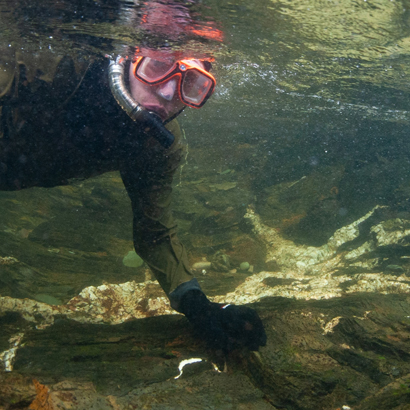Wildlife Biology Internships (WILD 398)
Internships allow you to get hands-on experience in wildlife biology. WILD 398 also fulfills the experiential learning requirement in the Wildlife Biology Program. Internships can be things such as working with state or federal wildlife agencies, non-governmental agencies, or working or volunteering as a research or field assistant on a wildlife project. See page 2 for the sorts of activities you might consider for an internship.
Procedure for enrollment
If you are considering an internship you will need to work with a faculty member (normally your faculty mentor), who will serve as your faculty internship mentor. Your faculty mentor can provide you with help and advice, but you have the final responsibility for arranging and organizing the internship.
Internships (WILD 398) can be set up for a different number of credits, depending on the amount of time you put into them: 1 credit requires 45 hours; 2 credits require 90 hours; 4 credits require 180 hours, and so on. Students in the Wildlife Biology Program are required to have at least 2 credits of experiential learning/hands on experience.
Requirements
All of the following must be completed before a grade (CR/NCR) can be assigned.
- You need an initial meeting with a Wildlife Biology faculty member, normally your faculty mentor. During this meeting you will discuss the activity you are proposing as an internship with the faculty mentor. The faculty mentor needs to approve the internship. It is your responsibility to initiate these meetings and come to the faculty mentor with any concerns or questions you have during the internship.
- You will also need to identify someone at the organization where your internship will be done that will serve as the supervisor of your internship there.
- You will need to sign up for WILD 398 for the appropriate number of credits with the assistance of your faculty mentor and the Wildlife Biology undergraduate advisor (to complete an add/drop form with instructor override).
- Once you have an internship lined up and have received approval from your faculty mentor and internship (work) supervisor, you go to the Internship Services website and click on "Submit Your Learning Agreement." This will take you to your UM Single Sign-on to access the portal.
- Enter your Net ID and Password and follow instructions to submit your learning agreement.
- During the internship you need to keep a field journal of daily activities (and hours spent). These can be included as an electronic appendix to your final internship paper.
- After your internship you will write a paper reviewing a topic or issue that you encountered during your internship. You must discuss the topic of your paper with your faculty mentor before you begin your paper so that you both understand its focus and scope. This paper should be approximately 6-10 pages long, depending on the number of credits you register for, and include at least 10 peer-reviewed scientific papers from the primary literature. The broad goal of the internship paper is to connect your internship experience with the scientific literature.
- The supervisor of your internship will evaluate your performance through Internship Services. You will also evaluate your internship.
- All materials must be turned in no later than the last week of classes, before Finals Week, of the semester in which you are registered for the internship credits. If you would like your faculty mentor to review and edit your paper before you turn it in, it must be submitted at least 3 weeks prior to the end of the semester in which you are registered.
Grading: Credit/No credit only
Course Number: WILD 398
Examples of Previous Internships
Many activities can be used for an internship. Here is a partial list of some of the sorts of activities that are appropriate for internships:
- Summer field research assistant for a professor or graduate student project on a wildlife biology project.
- Working with governmental agencies such as the US Forest Service, US Fish and Wildlife Service, Bureau of Land Management, Montana Fish Wildlife and Parks, and Montana Department of Natural Resource Conservation.
- Working with a conservation organization such as Trout Unlimited, Rocky Mountain Elk Foundation, Five Valleys Land Trust, the Nature Conservancy, Clark Fork Coalition, and Clark Fork Watershed Education Program on wildlife biology related projects.
- Completing a 1-year honors thesis on an independent research project with a professor.
Although most students pick internships that involve field work, depending on your interests and professional goals, some might involve more “desk work” as long as they were focused on wildlife issues. For example, an internship that involved policy analysis of wildlife issues would be appropriate. The faculty mentor for your internship will help you design an appropriate internship.
